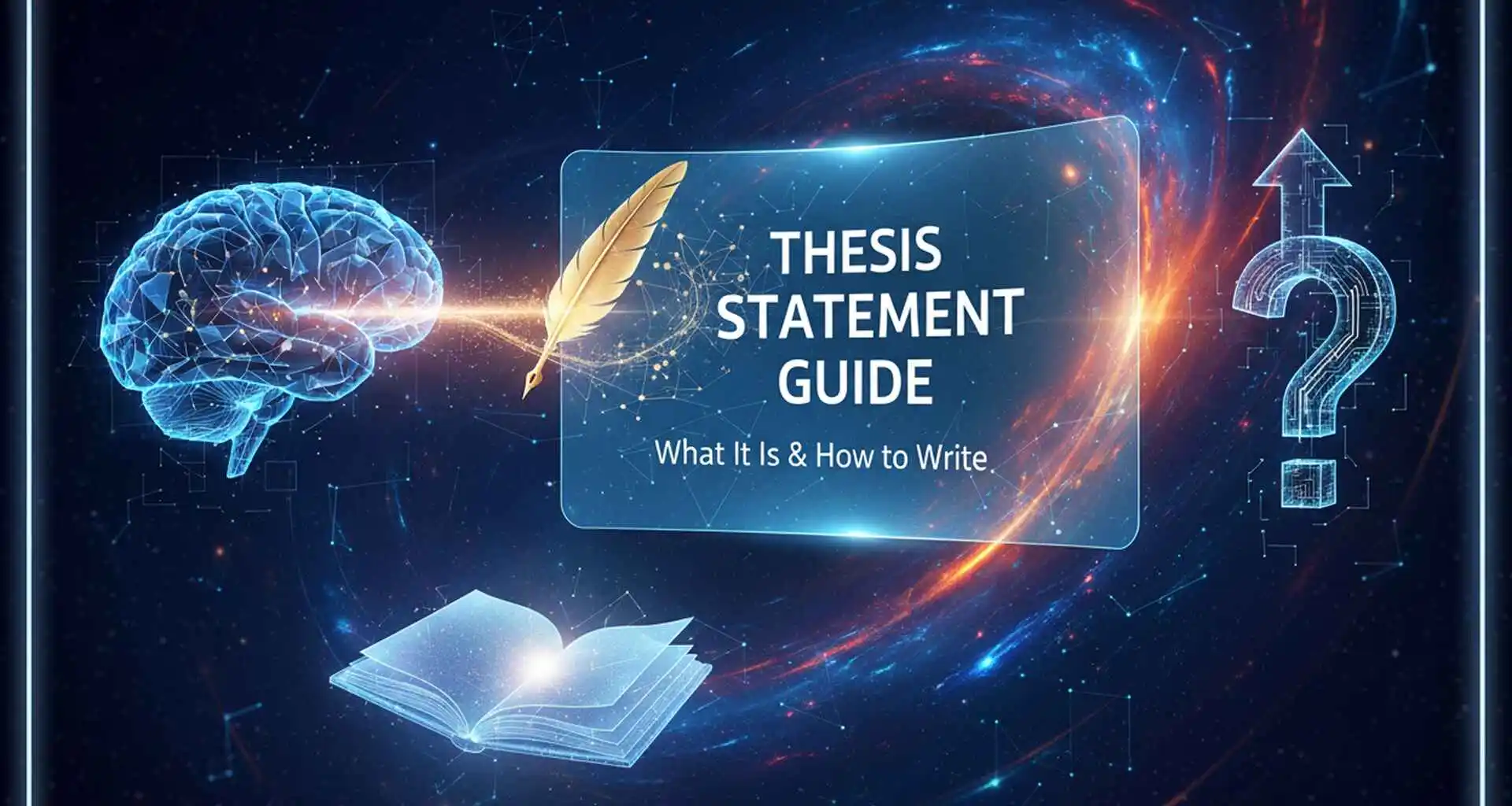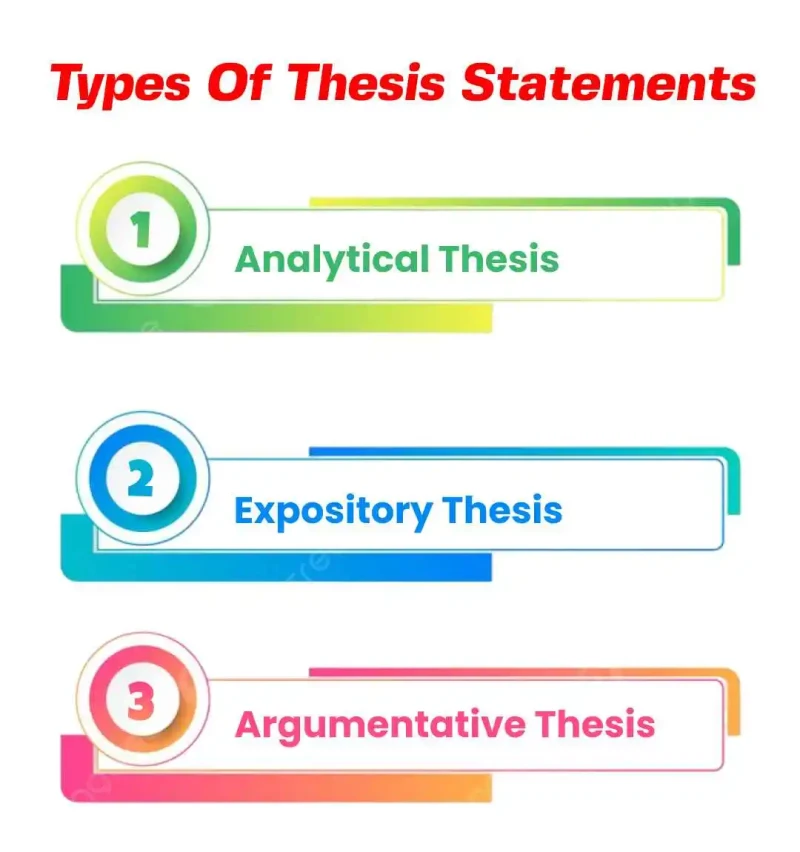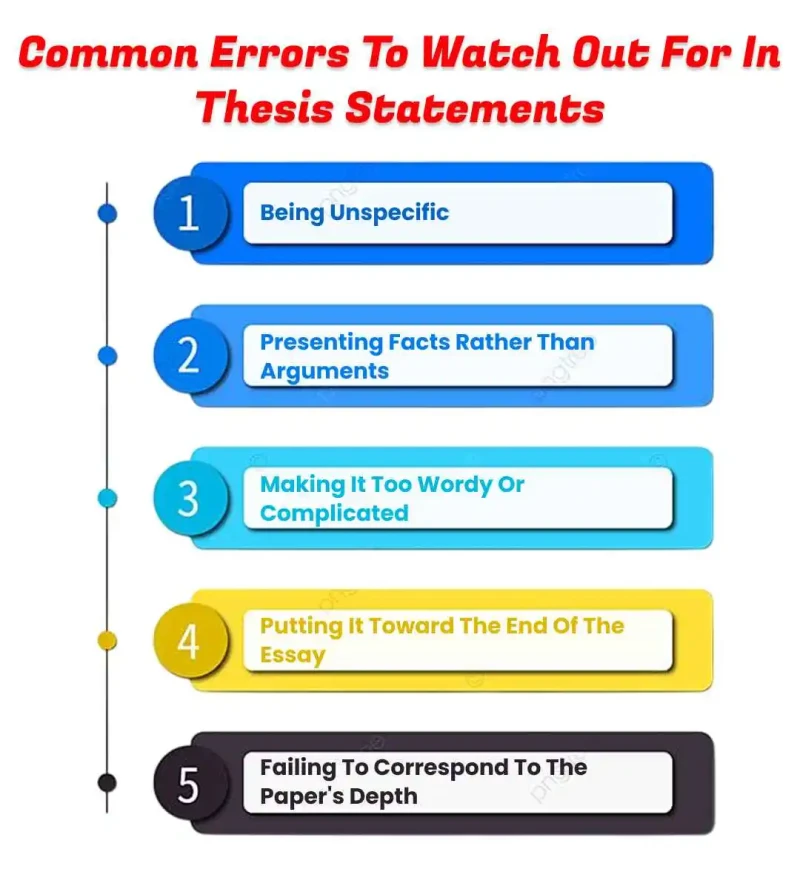
Luca
If you’ve ever stared at a blank page, unsure how to begin your essay or dissertation, it is the greatest hurdle in your academic writing. And one of the most common struggles students face is understanding what a thesis statement really is. Some confuse it with the entire thesis, while others think it’s just a random sentence in the introduction.
The truth is this: while writing a thesis, the thesis statement is the keystone of your scholarly work. It is the single sentence that precisely states your major idea and warns your reader that your argument is coming. Without it, your essay wanders, your dissertation lacks cohesion, and your research paper has no focus.
In this guide, we'll dissect it all for you: what the thesis statement is, why it matters so much, how to write one step by step, and what not to do. Through it all, you'll find examples that illustrate the contrast between weak and strong statements.
At its simplest, a thesis statement is a single sentence that tells the reader your paper’s main argument. Think of it as your promise: you’re telling your audience, “Here’s my stance, and here’s what you can expect me to prove.”
For example, instead of vaguely saying “Technology is important”, a strong thesis statement would be “Artificial intelligence is transforming higher education by reshaping how students learn, teachers instruct, and institutions manage academic resources.” See the difference? One is broad and vague, while the other is clear and specific.
So, how is a thesis different from a thesis statement? This is where most students go wrong.
A thesis is your entire document, your research paper or dissertation.
A thesis statement is a sentence, typically at the conclusion of your introduction, that encapsulates the overall argument of your thesis.
Consider this analogy: if your thesis is the entire novel, your thesis statement is the single-line summary on the back cover.
A thesis statement works like a compass for your writing. Without it, you'll be lost. With it, each part of your work has direction.
Here are some reasons why it matters:
Gives focus and clarity – It informs the reader precisely what your paper is about.
Leads the reader – Readers know what argument you're presenting and how you'll be supporting it.
Sets boundaries – It establishes what's pertinent and what isn't, and keeps your paper on topic.
Enhances coherence – A good thesis guarantees that all your paragraphs refer back to one ultimate point.
Communicates central argument – Clearly indicates what your paper aims to prove, analyse, or explore.
Defines study scope – Helps readers understand what is included and what lies outside your research focus.
Express position – Shows whether you are evaluating, comparing, analysing, or persuading.
Functions as a roadmap – Guides readers through the structure of your discussion and outlines the direction of your paper.
Writing a thesis statement can feel overwhelming, but breaking it into clear, structured steps makes the process manageable, less intimidating, and far more effective for shaping your overall research direction.
Read the instructions thoroughly. Is the paper argumentative, analytical, or explanatory? Your thesis must align with the assignment’s intent, academic expectations, and the purpose of your research or essay.
Don't try to chew more than you can handle. For example, rather than "Education in the 21st century," narrow it down to "The influence of online learning on postgraduate research students." This ensures a focused approach.
Decide the position you wish to adopt. A thesis statement is not only a topic—it’s your perspective, argument, and guiding idea about that subject matter.
Compose a straightforward sentence that juxtaposes your subject and your argument. Don’t worry if it feels imperfect or wordy at first; you can refine, sharpen, and strengthen it during revision.
Ensure your thesis is concise, specific, debatable, and strategically positioned at the conclusion of your introduction to guide readers toward the discussion ahead.

The type of thesis statement you choose depends on the purpose of your paper. There are three common types:
An analytical statement that breaks down an issue into its components, examining and interpreting each part.
Example: “The rise of fast fashion reveals not only environmental costs but also hidden social and economic consequences.”
A statement that explains, informs, or clarifies a topic for the reader without taking a stance.
Example: “Online learning platforms have reshaped higher education by increasing access to courses worldwide.”
A statement that presents a clear claim or position and supports it with evidence and reasoning.
Example: “Regulation of single-use plastics by the government is necessary to save marine life and reduce ocean pollution.”
Each type serves a different purpose, so select the one that aligns with your paper’s goal and research focus.
To observe this, look at these:
Weak: "Pollution is bad."
Strong: "Industrial pollution is the primary cause of climate change since it contributes to greenhouse gases."
This statement is ineffective as a dissertation thesis because it is overly vague, lacks a clear, arguable claim, and does not specify the focus or evidence for investigation.
Weak: "Social media impacts students."
Strong: "Too much use of social media decreases attention span and adversely affects academic achievement."
This statement is too broad and vague. It doesn’t specify how social media impacts students, making it difficult to research or argue. It lacks a clear focus, measurable outcomes, and an arguable claim.
Looking for more detailed guidance? Check out our blog on How to write a thesis for a clear, step-by-step guide.

Strong writers also make mistakes when writing thesis statements. These are errors to watch out for:
Being Unspecific – General or vague claims confuse readers and fail to provide a clear direction for your paper.
Presenting Facts Rather Than Arguments – A mere fact cannot be debated, so it does not serve as a strong thesis.
Making It Too Wordy or Complicated – Keep your thesis concise and clear, ideally expressed in one or two sentences.
Putting It Toward the End of the Essay – Your thesis should appear in the introduction, not buried in the conclusion.
Failing to Correspond to the Paper's Depth – Ensure your thesis aligns with the scope and complexity of your research topic.
Still anxious? Most students commit these mistakes and get rejected drafts. With a PhD consultancy service, you can have professional advice to polish your thesis statement.
Before you finalise, pose the following queries:
Is it arguable, not merely a fact?
Is it precise and targeted?
Does it indicate direction for the essay?
Can it be supported with evidence?
Is it situated in the introduction?
If you can say "yes" to all of these confidently, you're heading in the right direction. Still unsure? Don't worry. You can always get your work checked by professional thesis writers who can review and suggest edits.
At its essence, a thesis statement is just a focal claim roadmap. When you nail it, the rest of your paper falls into place. Your arguments are smooth, your research remains targeted, and your writing is more convincing.
Keep in mind: Developing a solid thesis statement requires practice. Don't be disheartened if your initial tries sound flimsy; every author drafts. The more you polish, the more compelling your arguments.
If you have doubts about your thesis, don’t hesitate, connect with us; we’ll help turn confusion into clarity and craft a statement that strengthens your research